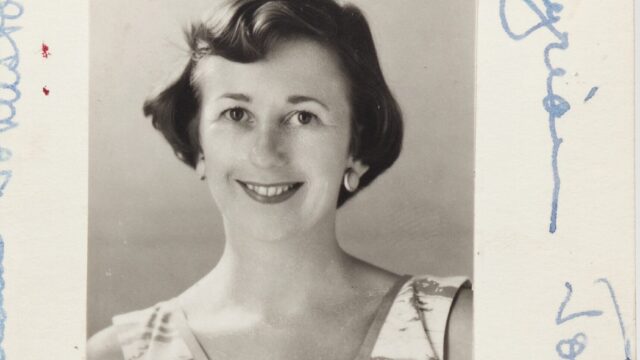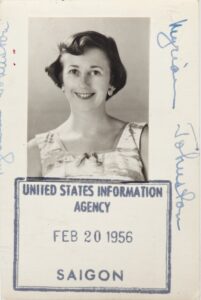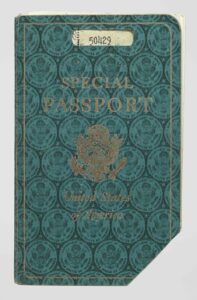
Passport Travels: Myriam Johnston, U.S. Information Agency Officer

Passport Travels: Myriam Johnston, U.S. Information Agency Officer
Spurred by a desire to see the world, Myriam Johnston joined the U.S. Information Agency (USIA) in 1955. President Eisenhower established USIA in 1953 in a concentrated effort to engage directly with foreign publics to advance understanding of American policies and culture. USIA played a key role in American foreign policy during the Cold War. Johnston initially had not set out to become a diplomat, but after studying in France in high school and working as a flight attendant, she knew she wanted to continue traveling. She happened to hear her favorite radio disc jockey mention a recruiting fair at a local hotel for the Voice of America, a part of the USIA, and she decided to stop by during her lunch break.
As she recalled, she was about to leave — convinced they were looking for technical expertise she didn’t have — when she was pulled aside by a USIA recruiter. She explained her lack of experience. “I can’t really do anything except type and speak French,” she told him. “On the contrary,” he replied, “we would be very interested in you.”

Assigned to Vietnam, the former colony of French Indochina, where she could use her language skills, Johnston departed for Saigon in March 1955. She recalled making several stops along the way. “They couldn’t fly you all the way [with no layovers]. It would kill you.” From Washington, D.C., she flew to Seattle then to Anchorage, Alaska. Then to Tokyo, with a day or two for rest. Then onward to Hong Kong, and finally to Saigon.
Johnston’s assignment to Saigon was at the height of the Cold War, amid the dissolution of French Indochina and a growing Communist insurgency led by Ho Chi Minh. Johnston’s work as a USIA diplomat meant she would play a key role in American foreign policy, engaging with the Vietnamese public about the United States and its values, and seeking to dissuade them from turning to communism. While there, she worked on film distribution and production. Visa stamps in her passport show her travels around the region, including a visit to the neighboring Philippines, where she recalled the USIA recruiting script writers, cameramen, and technicians to come to Saigon and train the Vietnamese in documentary filmmaking. Her assignment in Saigon ended in October 1957.
Myriam Johnston’s service with USIA spanned 25 years, from 1955 until her retirement in 1980. Other overseas assignments brought her to France, Côte d’Ivoire, and Bangladesh — utilizing four more passports also now in the museum’s collection, issued in 1959, 1969, 1975, and 1977.
Johnston, who married Richard R. Hallock later in her life and changed her name to Myriam Johnston Hallock, donated the passports and other items from her career to the museum in 2005 and 2007.